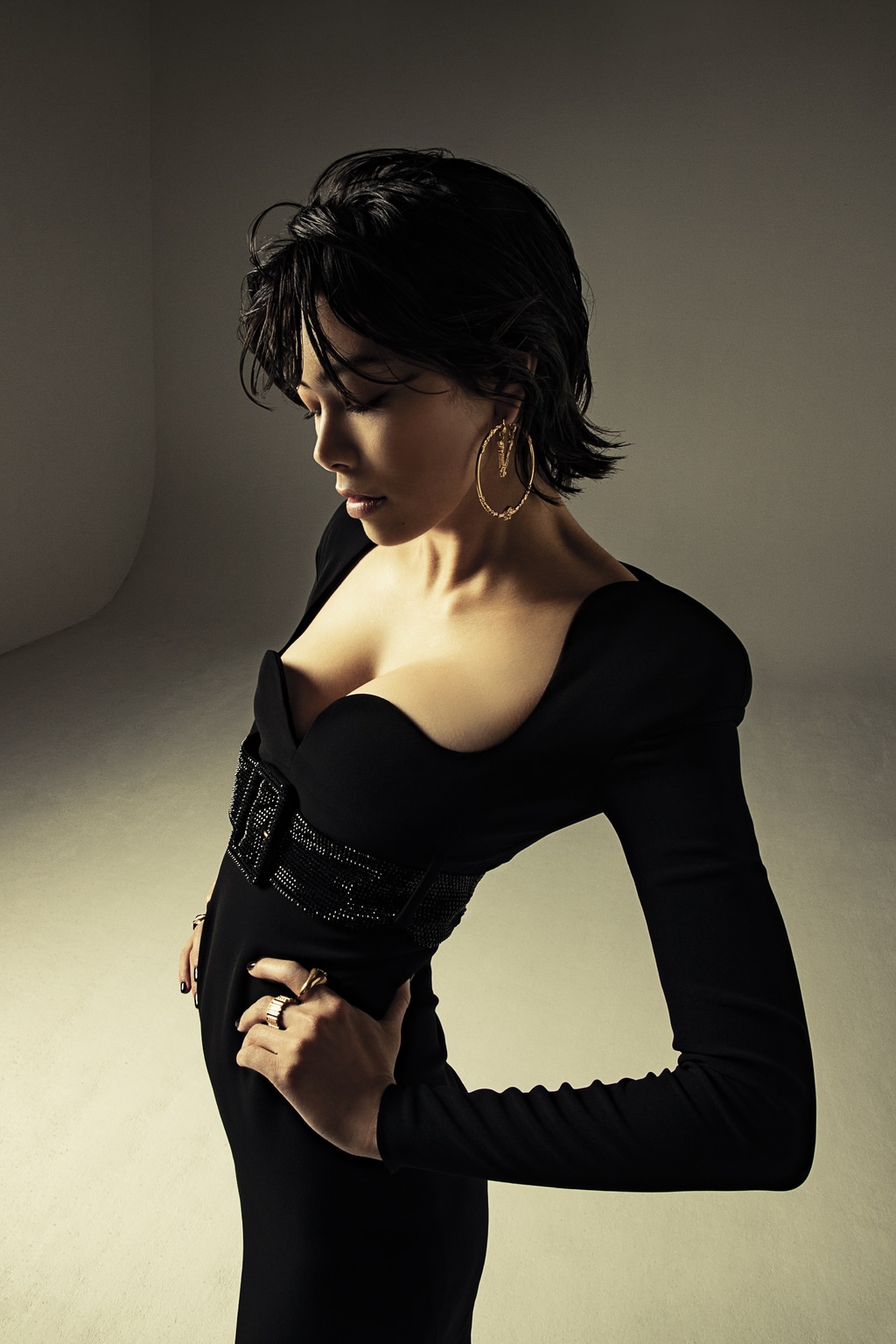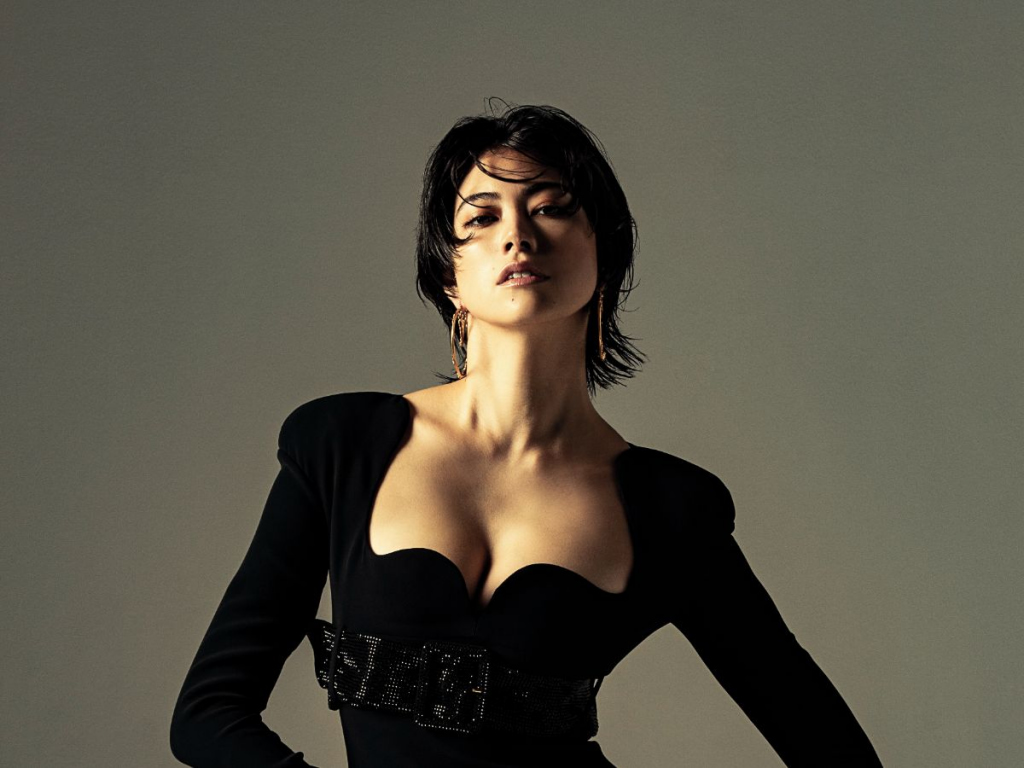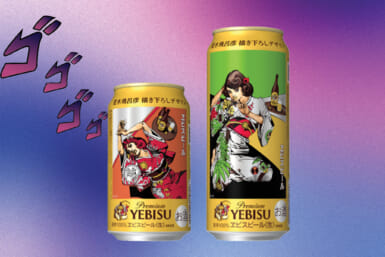After a long photo-shoot, I thought Hikari Mori may be tired and possibly a little apathetic for our interview. She was anything but. The 29-year-old model was brimming with energy and enthusiasm as she spoke in detail about her new business venture tefutefu. Under the slogan “Energizing Japan,” the company is aiming to spread Japanese culture around the world. As well as supporting young artisans and emerging corporations, the idea is to develop new products that utilize local crafts.
“I want Japanese people to be proud of their country and culture,” says Mori. “To encourage that, we’re taking things people here are familiar with and adding a ‘touch of Hikari essence’ to them. For instance, I’m doing a collaboration with Kohei Kirimoto. He has modernized the art of traditional wajimanuri, a type of lacquerware from Wajima city in Ishikawa Prefecture. Usually the products are black or red, but we want to create something new, combining white lacquer and cloth to make sturdy art pieces using kintsugi (an ancient technique literally meaning mending with gold).
“When it comes to traditional arts, it’s not easy to find people who are prepared to think outside the box,” adds Mori. “These are the kinds of artisans I’m attempting to work with. On top of that, we’re presenting a story so our customers can have a deeper understanding of these local crafts and traditions and why we need to protect them. There are so many items that are not only beautiful, but also have an amazing history and are sustainable. It was something I didn’t really think about before, but now I want to use my influence to spread this message.”

White mini dress and satin bow pumps by TOM FORD, choker necklace and rings by CHROME HEARTS.
Getting to Know Her Roots
During her teen years, Mori says she didn’t appreciate her own culture enough and as a result didn’t truly know herself. Born in Tokyo to a Japanese father and an American mother, she learned a little about her US roots during summers spent in Arizona visiting her grandmother, but never really thought about what it meant to be Japanese.
One of the main reasons for this, according to Mori, is the fact that she didn’t broaden her horizons. Unlike her four older siblings, she never lived abroad. After her modeling career started to take off, the youngest member of the family spent more time overseas. Experiencing different cultures, she started to think more about her own and quickly realized how little she knew about the country of her birth.
“I could only have very superficial chats about my culture,” recalls Mori. “I think it’s similar for many young people, particularly in Japan. Recently, I’ve been reading textbooks from old shushin classes – ethics training that was part of the Japanese curriculum until the end of World War II – and I feel compared to then, the Japanese spirit has become less pronounced to the point where I think it may disappear altogether. You don’t have to love your country, but I believe it’s important to have pride in it. That’s something I want to promote with this company.”

Sweetheart-neckline black long-sleeve midi dress, Virtus hoop earrings, medallion rings and black ankle boots all by VERSACE.
The Butterfly Effect
Having decided on the concept, Mori then had to choose a name. She went with tefutefu, the old way of writing “cho-cho” which means butterfly in Japanese. The colorful butterfly was the trademark of her grandmother Hanae Mori, Japan’s first internationally known designer. The now 96-year-old had the patronage of several influential figures including Hillary Clinton, Nancy Reagan, Grace Kelly and Empress Masako. She was an inspirational figure for her granddaughter and ironically one of her first boutiques also happened to be called tefutefu.
“I just found that out from my family recently – it’s a complete coincidence,” says Mori. “Growing up in Shimane, she was fascinated by how elegant butterflies looked and then started using them as a motif. During the pandemic I started reflecting more on her career. She lived through World War II and in the aftermath of it, realized that if she wanted something she would have to make it herself despite having nothing at that time. Launching a business is just the start, though. Maintaining it for a long time, that’s the hard part.”
And that’s what her grandmother did, continuing as a designer for more than five decades. An intrigued Hikari would sometimes peek at her shows from backstage prior to the legendary figure’s retirement in 2004. She also watched her sister Izumi modeling and subconsciously began thinking about how she could become part of the fashion industry. More than just an idle dream, it became a reality when she made her catwalk debut at 18. In doing so, she followed in the footsteps of not only her older sibling but also her mother, who worked as a model before having children.
Photos by Allan Abani
Styling by Rena Semba
Hair by Takayuki Shibata
Makeup by Kie Kiyohara
This article was published in the Sep-Oct 2021 issue of Tokyo Weekender. To flip through the issue, click the image below.









